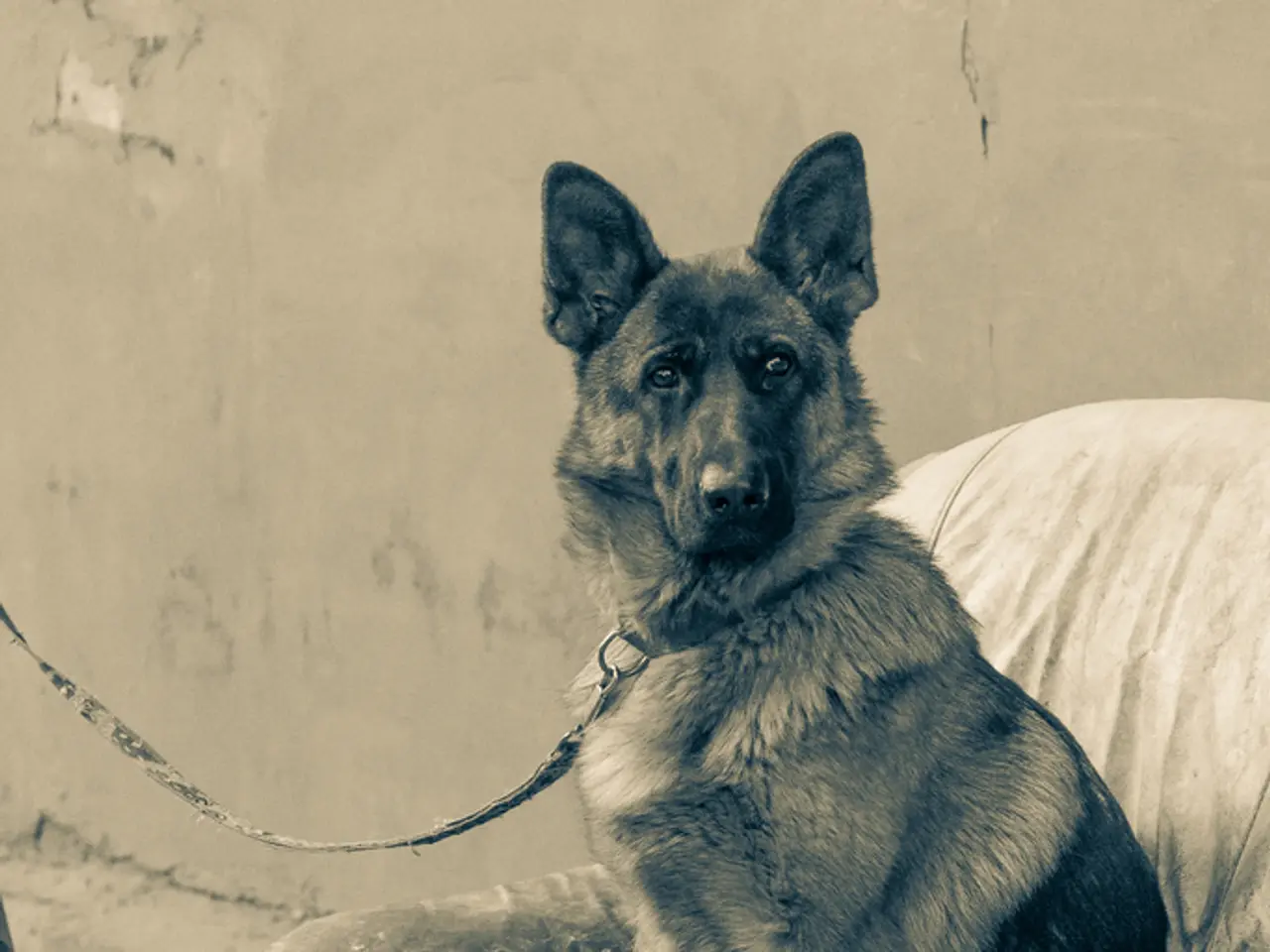Warning Signs of Canine Cognitive Deterioration: A Must-Know for All Dog Owners
Dogs, like their human companions, may experience cognitive decline as they age. This condition, known as Cognitive Dysfunction Syndrome (CDS) or 'doggy dementia', can cause a range of symptoms that pet owners should be aware of to help and advocate for their furry friends.
Confusion and disorientation are common signs of CDS. A dog with dementia might seem lost or confused in familiar settings, get stuck, or wander aimlessly. Changes in sleep patterns are also noticeable, with senior dogs sleeping more during the day but becoming restless at night, pacing, or vocalizing.
Dogs with CDS may also lose interest in activities they used to enjoy. They might pace or wander instead of resting, sleep more or have changes in their sleep pattern, and show reduced responsiveness or interest in usual activities and toys.
Physical signs such as changes in gait and posture or clumsiness might also be observed. Additionally, sensory decline, such as vision and hearing loss, can exacerbate anxiety and confusion, especially in low light conditions.
CDS can cause changes in memory and perception, leading to disorientation in familiar settings for dogs. Another sign of dementia in dogs is becoming more snappy or agitated.
It's essential to work with your vet to maximize your dog's quality of life for as long as possible. If you have any concerns about your dog's behavior, it's best to speak to your vet as soon as possible.
Dr. Charlotte Rice, an in-house vet at pet supplement brand YuMOVE, has shared key signs to look out for in dogs with dementia. She emphasizes that confusion in dogs can be stressful, so it's important to offer reassurance and help them feel safe. Watching a dog's body language during interactions can help support them during situations they might struggle in.
It's important to be aware that dementia in dogs should not be confused with normal aging in dogs. CDS is more common in senior dogs, affecting about one in three dogs over 11 years old.
Remember, there's no cure for CDS, but early detection and management can significantly improve the dog's quality of life. By recognizing the signs and consulting a veterinarian, you can help ensure your senior dog enjoys their golden years to the fullest.
- A dog with dementia might exhibit a lack of interest in toys, which were once sources of joy and engagement.
- Changes in a pet's behavior, such as becoming more snappy or agitated, could be signs of Cognitive Dysfunction Syndrome (CDS) or 'doggy dementia'.
- In addition to behavioral changes, sensory decline, such as vision and hearing loss, can contribute to anxiety and confusion in senior dogs.
- It's important to offer reassurance and create a safe environment for pets showing signs of CDS, as confusion can be stressful for them.
- By recognizing the symptoms of CDS, such as disorientation, changes in sleep patterns, and loss of interest in activities, pet owners can promptly consult a veterinarian for effective management.
- Early detection and appropriate care from a veterinarian can significantly improve the quality of life for dogs living with Cognitive Dysfunction Syndrome, helping them enjoy their golden years to the fullest.




